| Product Name | Tesla Powerwall 2 (DC) | LG Chem Resu 10 | LG Chem RESU 6.5 | Redflow Zcell | SimpliPhi PHI3.4 Smart-Tech battery | Mercedes-Benz Energy Storage Home | Leclanche Apollion Cube | GCL E-KwBe 5.6 | Delta Hybrid E5 | ELMOFO E-Cells ALB52-106 | Akasol neeoQube | Ampetus "Super" Lithium | Fronius Solar Battery | DCS PV 5.0 | BMZ ESS3.0 | Pylontech Extra2000 LFP | Aquion Aspen 48S-2.2 | Tesla Powerwall 2 (AC) | Hybrid "Home" Plus | SolaX Lead Carbon | Panasonic LJ-SK84A | Enphase AC Battery | Magellan HESS | GridEdge Quantum | SENEC.home Li 10.0 | Sonnenbatterie | ZEN Freedom Powerbank FPB16 | ABB REACT | PowerOak ESS | SolaX BOX | Ampetus Energy Pod | Samsung ESS AIO | Sunverge SIS | Alpha-ESS ECO S5 | Fusion Power Systems Titan-3 | BYD Mini ES |
| Product Image |  |
 |
 |
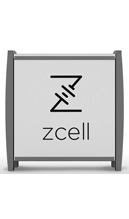 |
 |
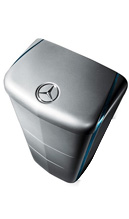 |
 |
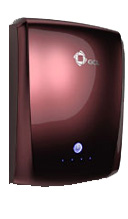 |
 |
 |
 |
 |
 |
 |
 |
 |
 |
 |
 |
 |
.jpg) |
 |
 |
 |
.jpg) |
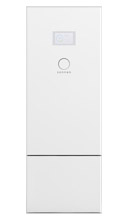 |
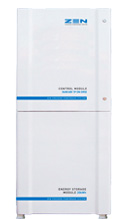 |
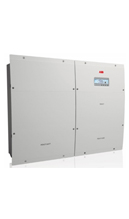 |
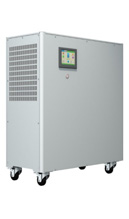 |
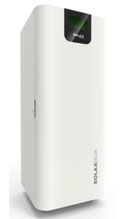 |
 |
 |
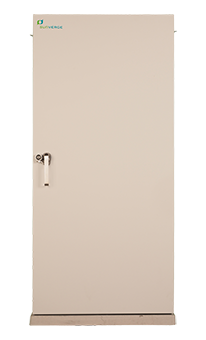 |
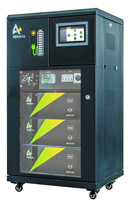 |
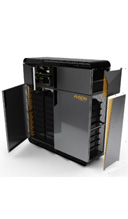 |
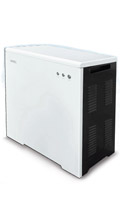 |
| In Depth Analysis? | Yes, here. | Yes, here. | Yes, here. | Yes, On-grid and Off-grid. | Not yet. | Not yet. | Not yet. | Yes, here. | Not yet. | Not yet. | Not yet. | Yes, here. | Not yet. | Not yet. | Not yet. | Not yet. | Yes, here. | Yes, here. | Not yet. | Not yet. | Not yet. | Yes, here. | Not yet. | Not yet. | Not yet | Yes, here. | Not yet. | Not yet. | Not yet. | Not yet. | Not yet. | Not yet. | Not yet. | Not yet. | Not yet. | Not yet. |
| Battery Type | Lithium-Ion | Lithium-Ion | Lithium-Ion | Flow (Zinc-Bromide) | Lithium-ion (Lithium Iron Phosphate) | Li-NCM (Lithium Nickel Cobalt Manganese) | Li-Ion (NMC) | Li-NCM (Lithium Nickel Cobalt Manganese) | Lithium-Ion | Lithium Ion | Lithium Ion | Lithium Ion (Lithium Iron Phosphate) | Lithium-ion (Lithium Iron Phosphate) | Lithium-Ion (Lithium Iron Phosphate) | Li-Ion (NMC) | Lithium-ion (Lithium Iron Phosphate) | Aqueous Hybrid Ion | Lithium Ion | Lead Crystal | Lead Carbon (Pb-C) | Lithium Ion | Lithium Ferrite Phosphate | Lithium-Ion (lithium-mananese-cobalt-oxide) | Sodium Nickel Chloride | Lithium Ion | Lithium-ion (Lithium Iron Phosphate) | Lithium-ion (Lithium Iron Phosphate) | Lithium-Ion | Lithium-Ion | Lithium-ion (Lithium Iron Phosphate) | Lithium-ion (Lithium Iron Phosphate) | Lithium Ion (Lithium Manganese Oxide) | Lithium-Ion | Lithium-ion (Lithium Iron Phosphate) | Aqueous Hybrid Ion | Lithium Iron Phosphate |
| All In One unit? |
No (But does include DC-DC converter) |
No | No | No | No | No | No | No | No | No | No | No | No | No | No | No | No | Kind of. Includes AC battery inverter but requires solar inverter. | Yes | Yes | Yes | Yes (includes microinverter - requires 1 Envoy-S comms unit per install) | Yes | Yes | Yes | Yes | Yes | Yes | Yes | Yes | Yes | Yes | Yes | Yes | Yes | Yes |
| Price (Estimated Retail pricing in AUD incl. GST, unless stated otherwise) | $8,000 | $8,800 | $6,600 | $12,600 | $5,150 (per individual battery module) | TBD | $9200 per 6.7kWh module | $3,650 | $8,500 | $8,190 | $12,000 | $2,300 | $15,550 | $5,900 | $7700 | $1,999 per 2.4kWh battery | $2,200 per stack | $8,800 | $11,000 | $6,990 | $11,900 | $2,000 (fully installed) | $20,600 | $20,000 | $20,860 | $30,500 |
$21,750 (fully installed)
|
TBD | $13,050 | $14,100 | $11,385 | $12,000 |
$26,000 (Fully installed) $3,849 (Fully installed, special offer for Adelaide metropolitan region only, limited to first 1000 AGL customers, $899 extra if you want backup in the event of a blackout) |
$12,375 | $13,750 | $8,400 fully installed |
| Nominal Storage | 13.5 kWh | 9.8kWh | 6.5 kWh | 10 kWh | 3.4kWh | 2.5kWh | 6.7kWh | 5.6kWh | 6kWh | 5.5kWh | 5.5kWh | 3 kWh | 12kWh | 5.12kWh | 6.74kWh | 2.4kWh | 2.2kWh | 13.2kWh | 9.84kWh | 6kWh | 8kWh | 1.2kWh | 12.8 kWh | 9.6kWh | 10kWh | 16kWh | 16 kWh | 2kWh | 12 kWh | 14.4 kWh | 14.4kWh | 7.2kWh | 11.6kWh | 14.4 kWh | 8kWh | 3.75kWh |
| Usable Storage Capacity | 13.5 kWh | 8.8kWh | 5.9 kWh | 10 kWh | 2.75kWh | 2kWh | 5.4kWh per module | 5.6kWh | 4.8kWh | 4.4kWh | 4.95kWh | 2.7 kWh | 9.6kWh | 5.12kWh | 5.4kWh | 1.92kWh per battery | 2.2 kWh per stack | 13.2kWh | 8.2kWh | 4.5kWh | 8kWh - degrades to 4.8kWh after 10 years | 1.14kWh per single modular battery (designed to be scalable) | 11.52 kWh | 7.68kWh | 10kWh | 16kWh | 14.4 kWh | 2kWh base unit, expandable in 2kWh modules up to a max of 6kWh | 9.8 kWh | 11.52kWh | 11.52kWh | 6.48kWh | 9.86 kWh | 12.96 kWh | 8kWh | 3kWh |
| Pros | Advanced safety features minimise fire risk, extremely competitive price, impressive warranty | Can be used in both off-grid and hybrid setups, compact size, modular expansion. | Can be used in both off-grid and hybrid setups, compact size, modular expansion. | Safe chemistry (low fire danger compared to lithium ion), high depth-of-discharge, can tolerate temperatures up to 50 degrees C, easily recycleable, Australian owned & developed | American made, can be used in both off-grid and hybrid setups, compact size, modular expansion, 10 year warranty, very high cycle life, BMS integrated into each battery | German engineered, high cycle life, expected to have 80% DoD after 10 years | German made, high quality, plug and play with SMA sunny island, expandable up to 12 modules | Low cost, comes in multiple colours, lightweight | High cycle life | Can be used in both off-grid and hybrid setups, capable of a high rate of discharge, easy expansion, intelligent BMS, developed in Australia using Kokam cells | German made, high cycle life and depth of discharge, 10 year warranty | High cycle life, very long warranty (15 years offered by Ampetus) | High cycle life, good power output | Australian engineered, rebuildable design, super charging capable BMS, wide operating temperature range, very high cycle life, IP67 fully sealed design | High quality German made, plug and play with SMA sunny island, expandable up to 12 modules, and high 8kW continuous discharge power + surge. | Safest Lithium Chemistry, Scalable, Integrated BMS, good cost-per-kWh | Great price-per-kWh, modular, environmentally friendly disposal, inherently safe chemistry (low fire risk compared to lithium ion), also available in a 24V version (Aspen 24S-83), which enables use of lower cost inverters and chargers. | Advanced safety features minimise fire risk, extremely competitive price, impressive warranty | Unique technology, inherently safe chemistry | High performance with partial charging | Simple 'AC Coupled' installation, 7 Year parts & labour warranty, 10 year (60% SoH) battery performance warranty. | Simple installation, easy to add more batteries to increase storage capacity. Great $/kwh if cycling twice per day. | Australian owned and developed, Reposit Ready, has backup capability, rugged design for Australian environment, can be expanded to up to 19.2 kWh | Wide operating temperature range, great power output | Made in Germany, 100% DoD, high cycle life | Made in Germany, 100% DoD, long cycle life, great warranty | Good power output, designed for totally off-grid usage | 100% claimed DoD, long cycle life | Good cycle life | 7” Touchscreen + Wi-Fi, Dual Solar inputs up to 6kW, Automatic blackout protection and free remote monitoring (App & Web). | Good power output, built in voltage regulator, patent-pending voice control | Good value if you have an application that discharges up to 3x per day. | Has backup capability if grid goes down, extremely high surge power (8.5kW for 30 minutes), very long lifespan. Good $/kwh if cycling twice per day. If you live in the Adelaide metropolitan region, you can get it for a significant discount. | High cycle life and depth of discharge, relatively compact size | Environmentally friendly disposal, inherently safe chemistry (low fire risk compared to lithium ion), high depth-of-discharge |
Compact, Efficient, Grid tie inverter agnostic |
| Cons | Not available yet. | Battery is warranted to 45ºC ambient | Battery is warranted to 45ºC ambient | Heavy. Question mark over DC-DC roundtrip efficiency (~80%). Requires a maintenance cycle once a week or so that takes the battery offline for a few hours. | Relatively expensive | Only works with SMA inverters | Supported by limited number of inverters | Low cycle life | Designed to work only with Delta's E5 inverter | TBD | Only compatible with SMA inverters, expensive | TBD | Can only be installed indoors, relatively short warranty compared to other lithium-ion batteries, expensive. 3 Phase only. | TBD | Supported by limited number of inverters | Only 5 year warranty, currently only compatible with SolaX Power Hybrid inverters and Redbacks. | Heavy, low power output compared to lithium-ion unless many battery stacks are purchased and linked together (increasing overall costs). | Not available yet. | Relatively low cycle life compared to other battery types, heavy | Only two year warranty at 75% DoD, low cycle life, heavy | Low power output compared to other lithium batteries | Very low power output per battery, not available until mid 2016. | Heavy, expensive initial cost, battery performance and DOD is benchmarked against a low temperature (25 deg C) | Expensive, heavy | Low power output - 2.5kW max, expensive | Relatively low power output - max 3kW continous single phase, 3.3kW three-phase (5kW peak), expensive | Battery warranty is 10 years but the control system is only warranted for 5 years | Low maximum storage, low power output | Battery warranty is 10 years but the control system is only warranted for 5 years | Expensive, heavy | Heavy | Expensive for daily cycling |
Heavy If you are purchasing one through the above-mentioned AGL program, (Adelaide metro area only) you need to participate in Virtual Power Plant and remain an AGL retail electricity customer for the duration of the program (5 years). |
Heavy | Very heavy | Expensive |
| Weight | 120kg | 75kg | 52kg | 290kg | 38 kg (per individual battery module) | 37kg | 95kg per module | 47.5kg | 74kg | 41kg | 62kg | 53kg | 176kg | 48kg | 95kg | 27kg per battery | 118kg per stack | 122kg | 300kg | 380kg | 159kg | 25kg | ~260kg | 180kg | 150kg | 263kg | TBD | 67kg for base 2kWh module, add 37 kg for each additional module | 185kg | 250kg + | 310kg | 194kg | 300 kg | 180kg | 614kg | 96kg |
| Power | 5kW steady, 7kW peak (10 seconds) | 5kW steady, 7kW peak (3 seconds) | 4.2kW steady, 4.6kW peak (for 3 seconds) | 3kW steady, 5kW peak | 3.1 kW steady, 4.1kW peak (multiply by number of modules) | Scales in increments of 1.25kW steady per battery module, to a maximum of 4.6kW steady | 3.3kW steady, 6.5kW peak | 3kW steady | 3kW steady | 5kW steady, 40kW peak | 5kW | 1.5kW steady, 3kW peak (10 seconds) | 4kW steady | 5kW continuous, 6.4kW peak | 8kW steady, 16kW 3sec peak | 2kW continuous per module (stacks with each additional module) | 0.68kW steady, 1kW peak (stacks with each additional 2.2kWh pack) | 5kW steady, 7kW peak (10 seconds) | 3kW steady, 5kW peak | 4.6kW on grid, 3kW peak in backup mode | 2kW steady | 260W per battery (stacks with each additional battery) | 5kW steady | 4.5kW steady, 9kW peak | 2.5kW steady | 3kW (single phase) or 3.3kW (three phase) (5kW peak) | 5kW | 1.5kW steady/1.8kWh peak | 3kW steady, 4.5kW peak | 4.6kW grid connected / 6.0kW peak in backup mode | 5kW steady, 6kW peak | 4kW | 5kW steady, 8.5kW peak | 5kW steady | 3.5kW steady | 3kW on grid/2kW off grid |
| Dimensions (WHD) | 115 cm x 75 cm x 15cm | 45cm x48cm x 23cm | 45cm x 65cm x 12cm | 50cm x 115 cm x 100cm | 34 cm x 35 cm x 20 cm | 47cm x 43cm x 29cm | 67cm x 53cm x 47cm | 53cm x 17cm x 70cm | 55 cm x 59cm x 20cm | 37cm x 23cm x 32cm | 46 cm × 46 cm x 28 cm | 44cm x 13 cm x 68 cm | 57cm x 95cm x 61cm | 55cm x 55cm x 22cm | 64cm x 45cm x 42cm | 37cm x 13cm x 43cm | 33cm x 93 cm x 31cm | 115 cm x 75 cm x 15cm | 60 cm x 140 cm x 40 cm | 112 cm x 36cm x 53cm | 96cm x 138cm x 27cm | 39cm x 32.5cm x 22cm | 70cm x 180 cm x 65cm | 70cm x 125cm x 56 cm | 53cm x 112cm x 40cm | 64cm x184cm x 22cm | 80cm x 180cm x 58cm | 98cm x 74cm x 22cm | 71cm x 90cm x 35cm | 68cm x 162cm x 65 cm | 70 cm x 130 cm x 55 cm | 28cm x 120cm x 114cm | 86cm x 186cm x 36cm | 60cm x 116 cm x 60 cm | 81cm x 185cm x 70cm | 68cm x 61cm x 25cm |
| Cycle Life | (Not provided) @ 100% DoD | 3200 cycles @ 90% DoD | 3,200 cycles at 90% DoD | 3,650 cycles at 100% DoD |
0ºC to 43ºC: 10,000 cycles at 80% DoD -5ºC to 49ºC 5,000 cycles at 100% DoD
|
8,000 cycles @ 80% DoD | 6,000 cycles @ 80% DoD | 2,555 cycles @ 100% DoD | 6,000 cycles @ 80% DoD | 8,000 cycles @ 80% DoD | 7,000 cycles @ 90% DoD | 10,000 cycles @ 90% DoD | 8,000 cycles at 80% DoD | 5,000 cycles @ 100% DOD | 5,000 cycles @ 80% DoD | 4,000 cycles at 80% DoD | 3,000 cycles at 100% DoD | (Not yet provided) @ 100% DoD. | 2,400 at 80% DoD | 2000 cycles at 75% DoD | 3650 cycles @ 100% Depth of Discharge (DoD) and a 60% State of Health (SoH) warranted for 10 years. | 7300 cycles at 95% DoD | 4,000 cycles at 90% DoD | 3,500 cycles at 80% DoD | 12,000 cycles at 100% DoD | 10,000 cycles at 100% DoD | 6,000 cycles at 90% DoD | 4,500 cycles at 100% DoD | 6,000 cycles at 80% DoD | 4,000 cycles to 80% DoD (80% capacity remaining) | 4,400 cycles at 80% DoD | 6,000 cycles at 90% DoD | 7,000 cycles at 85% DoD | 6,000 cycles at 90% DoD | 3000 cycles at 100% capacity, 1000 additional cycles at 80% capacity, 1000 additional cycles at 70% capacity (total 5000 cycles) | 6000 cycles at 80% DoD |
| Round Trip Efficiency | 91.8% | 95% | 95% | 80% | 98% | 97% | 97% | 95% | 90% | 96% | 98% | 95% | >90% | 99% | 97% | TBC | 90% | 89% | 92% | 85-90% | 93% | 96% | 97% | 95% | 95% | 93% single phase, 96% three phase | TBD | 94% | TBD | 97% | 97% | 95% | 96% | 95% | 94% | 98% |
| Off-grid Capable? | Yes | Yes | Yes | Yes | Yes | Yes | Yes, with Sunny Island or Struder inverter/charger | Capable, but designed for on-grid | Capable, but designed for on-grid | Yes | Yes | Yes | Yes | Yes | Yes, with Sunny Island | EPS capable with SolaX Power inverters | Yes | Unknown - but DC version is better bet for off gridders. | Yes | Yes – With 2 AC outputs (Grid/Backup) | No | No | No | Yes | No - backup only | No - emergency backup available Q2 2017 | Yes - designed specifically for it | TBD | Yes | Yes – With 2 AC outputs (Grid/Backup) | Yes | Yes | Designed for on-grid use, but grid-backup option available for $899 | Yes | TBD | Blackout protection available for essential loads |
| Designed for indoor or outdoor installation? (IP rating) | Indoor/Outdoor (IP 67 for battery and electronics, IP56 for wiring) | Indoor (IP 55) | Indoor (IP 55) | Can be installed indoors, but outdoor installation is recommended (IP 43) | Indoor (IP 54) | Indoor (IP 20) | Indoor (IP 21) | Indoor (IP54) | Indoor/outdoor (IP 54) | Indoor (IP 21) | Indoor (IP 50) | Indoor (IP 21) | Indoor (IP 20) | Indoor/Outdoor (IP 67) | Indoor (IP 21) | Indoor (IP 20) | Indoor (IP 22) | Indoor/Outdoor (IP 67 for battery and electronics, IP56 for wiring) | Indoor/Outdoor (IP 55) | Indoor (IP 20) | Outdoor (IP 54) | Indoor (IP 20) | Indoor/Outdoor (IP 54) | Indoor/Outdoor under cover (IP 43) | Indoor (IP 21) | Indoor (IP 21) | TBD | Indoor (IP 21) | Indoor (IP 21) | Indoor (IP 20) | Indoor (IP 42) | Indoor/Outdoor (IP 54) | Indoor/Outdoor (IP 54) | Indoor (IP 21) | Indoor/Outdoor (IP 56) | Indoor (IP 32) |
| Operating temperature range | -20°C to 50°C | -10°C to 45°C | -10°C to 45°C | 10°C to 50 °C | -20° to 60°C | 6°C to 44°C | 0°C to 45°C | -20°C to 50°C | 0°C to 50°C | 0°C to 45°C | 0°C to 40°C | 0°C to 45°C | 5°C to 35°C | -5°C to 45°C | 0°C to 45°C | -10°C to 50°C | -5°C to 40°C | -20°C to 50°C | 1°C to 40°C | -20°C to 50°C | 0°C to 40°C | -20ºC to 45ºC | 0?C - 45?C | -20°C to 60°C | 0°C to 40 °C | 5°C to 40 °C | TBD | 0°C to 40°C | 0°C to 40°C | -10°C to 50°C | -25 to 60°C | -10°C to 40°C | -20°C to 50°C | 0°C to 40°C | -5°C to 50°C | 0°C to 40°C |
| Reposit Ready? | Reposit tell us it will be compatible. | Yes, with Sungrow SH5K Hybrid inverter | Yes, with Sungrow SH5K Hybrid inverter | Capable – working with Reposit to deliver | Yes, when used with any suitable 48V inverter (such as SMA, Sungrow, Solax etc.) | TBD | No | No | TBD | Yes, when used with any suitable 48V inverter (such as SMA, Sungrow, Solax etc.) | No | Yes | No | Yes, when used with any suitable 48V inverter (such as SMA, Sungrow, Solax etc.) | No | Capable – working with Reposit to finalise | Can be paired with inverters that are Reposit ready | Reposit tell us it will be compatible. | Capable – working with Reposit to finalise | Capable – working with Reposit to finalise | No | Yes | Yes | No | Planned | No - they have their own software that competes with Reposit | TBD | TBD | Planned for the future | Capable – working with Reposit to finalise | TBD | No | No - Sunverge have their own software that competes directly with Reposit | Not currently - planning to add in future | No | Currently not available |
| Both single and three phase compatible? | Yes | Yes | Yes | Yes | Yes | Yes | Yes | Yes | Yes | Yes | Yes | Yes | 3 Phase Only | Yes | Yes | Single phase inverters currently, 3 phase planned for future | Yes | Yes - but will only connect to one phase per Powerwall. | Yes | Single Phase, can install multiple units for 3 phase sites if required | Single phase output; can install multiple units for 3 phase sites if required | Yes. | Only single phase | Only single phase | Yes | Yes | TBD | TBD | Only single phase | Single Phase, can install multiple units for 3 phase sites if required | Yes | Yes | Yes, but will only be connected to one phase per Sunverge unit | Single phase only | TBD | Yes |
| Warranty |
10 years unlimited cycles. 70% capacity at 10 years (Solar self-consumption/ backup only) Other Applications: 10 years or 37.80 MWh throughput |
60% capacity at 10 years or 30,000 kWh throughput whichever comes first | 60% capacity at 10 years or 20,000 kWh throughput whichever comes first | Warranted total energy throughput 36.5MWh or a maximum of 10 years, whichever comes first. | 10 years | 10 years | 10 years | 7 years | 5 years | 10 years - if registered and connected to the E-Cells portal. If not, warranty is 5 years or 4,000 cycles, whichever comes first | 10 years | 15 years 'extended' warranty offered as standard by Ampetus | 5 years if purchase is registered with Fronius within 30 days, otherwise 2 years. | 10 years | 10 years | 5 years product warranty | 5 years full warranty, 3 extra years partial warranty | AC version warranty document not supplied - expected to be similar to DC version. | 5 years, optional extra 5 year warranty | 2 years |
10 years (performance) 7 years (product) |
10 years | 5 year inverter warranty, 10 year battery warranty | 5 years | 10 years or 12,000 cycles, whichever comes first | 10 years or 10,000 cycles, whichever comes first | 5 year inverter warranty, 10 year battery warranty | TBD | 5 year product warranty, 10 year battery warranty | 5 years | 5 years | 5 years | 10 years | 5 years product warranty, 10 years battery performance warranty (extendable to 20 years) | 8 years on full system including enclosure, inverter, charge controller and batteries | 10 years battery. 5 years balance of systems |
| Warranty Document Supplied? | Yes | Yes | Yes | Yes | Yes | No | No | Yes | No | No | No | Yes | Yes | No | No | Yes | No | No | No | No | Yes | No | No | No | No | No | No | No | No | No | No | Yes (pages 56-61) | Yes | No | No | No |
| Total warranted kWh (max 2 cycles per day) | 37,800 (to cycle more than once per day you'd have to be using it for 'other applications' as per the warranty) | 30,000 (hard limit in warranty) | 20,000 (hard limit in warranty) | N/A (Only warranted for 1 cycle per day) | 20,075 (implied) | TBD | 32,400 (implied) | N/A (Warranted for 1 cycle per day for 7 years) | 17,520 (implied) | 32,120 (implied) | 34,650 (implied) | 16,930 |
35,040 (implied) |
25,600 (implied) | 27,000 (implied) | 7.008 (implied) | 6,600 (implied, based on 5 year warranty) | 37,800 (to cycle more than once per day you'd have to be using it for 'other applications' as per the warranty) | 19,680 | 9,000 (implied) | N/A (not warranted for >1 cycle per day) | 8,322 (implied) |
42,048 (implied) |
26,880 (implied) | 73,000 (implied) | 116,800 (implied) | 52,560 (implied) | TBD | 35,040 (implied) |
42,048 (implied) |
42,048 (implied) | 23,652 (implied) | 71,978 (implied) | 47,304 (implied) | 27,000 (implied) | 10,950 (implied) |
| Cost per warranted kWh (max 2 cycles per day) | N/A (hard limit in warranty for high cycle applications) | N/A (hard limit in warranty) | N/A (hard limit in warranty) |
N/A (Only warranted for 1 cycle per day) |
$0.27 (+ inverter cost) (and < 43ºC) @ 2 cycles per day | TBD | $0.28 (+ inverter cost) @ 1.6 cycles per day | N/A | $0.49 (+ inverter cost) @ 2 cycles per day | $0.25 (+ inverter cost) @ 2 cycles per day |
$0.35 (+inverter cost) @1.9 cycles per day |
$0.14 (+ inverter cost) @ 1.8 cycles per day |
$0.44 (+ inverter cost) @ 2 cycles per day |
$0.23 (+ inverter cost) @ 1.4 cycles per day | $0.29 (+ inverter cost) @ 1.4 cycles per day | $0.29 (+ inverter cost) @ 2 cycles per day | $0.33 (+ inverter cost) @ 1.6 cycles per day | N/A (hard limit in warranty for high cycle applications) | $0.56 @ 1.3 cycles per day | $0.78 @ 1.8 cycles per day |
N/A (not warranted for >1 cycle per day) |
$0.24 @ 2 cycles per day |
$0.49 @ 2 cycles per day |
$0.74 @ 1.9 cycles per day | $0.29 @ 2 cycles per day | $0.26 @ 2 cycles per day | $0.41 @ 2 cycles per day | TBD | $0.37 @ 2 cycles per day |
$0.34 @ 2 cycles per day |
$0.27 @ 2 cycles per day |
$0.51 @ 2 cycles per day |
$0.38 @ 2 cycles per day $0.05 @ 2 cycles per day (Special AGL pricing for Adelaide metro customers only) |
$0.26 @ 2 cycles per day |
$0.51 @ 1.71 cycles per day | $0.77 @ 2 cycles per day |
| Total warranted kWh (1 cycle per day) | 37,800 (assuming most people will want to use 'other applications' such as off peak charging and Reposit) | 26,089 | 17,897 | 36,500 | 10,037 | TBD | 19,710 | 11,994 | 8,760 | 16,060 | 18,067 | 11,880 |
17,520 |
18,688 | 19,710 | 3,504 |
4,015 (based on 5 yr warranty) |
37,800 (assuming most people will want to use 'other applications' such as off peak charging and Reposit) | 14,965 | 4,927 | 20,440 | 4,161 |
21,024 |
14,016 | 36,500 | 58,400 | 26,280 | TBD | 17,520 |
21,024 |
21,024 | 11,826 | 35,989 | 23,652 | 23,360 | 5,475 |
| Cost per Total warranted kWh (1 cycle per day) | $0.21 (+ inverter cost) | $0.33 (+ inverter cost) | $0.37 (+ inverter cost) | $0.35 (+ inverter cost) | $0.51 (+ inverter cost) | TBD | $0.47 (+ inverter cost) | $0.30 (+ inverter cost) | $0.97 (+ inverter cost) | $0.51 (+ inverter cost) | $0.66 (+ inverter cost) | $0.19 (+ inverter cost) |
$0.89 (+ inverter cost) |
$0.32 (+ inverter cost) | $0.39 (+ inverter cost) | $0.57 (+ inverter cost) | $0.55 (+ inverter cost) | $0.23 | $0.74 | $1.42 | $0.58 | $0.48 |
$0.98 |
$1.43 | $0.57 | $0.52 | $0.83 | TBD | $0.74 |
$0.67 |
$0.54 |
$1.01 |
$0.72 $0.11 (Special AGL pricing for Adelaide metro customers only) |
$0.52 |
$0.59 | $1.53 |
Home > Solar Battery Storage > Comparison Table
Solar Battery Storage Comparison Table
Last updated: February 2017
| Hit 'Expand' for fullscreen. Scroll within the table to see all the rows and columns. See notes below the table. Any corrections, additions or feedback? Email us. |
We plan to update this table frequently as more products become available, and specs of existing products change.
Please note that pricing is our best estimate of retail pricing incl GST, unless specifically noted otherwise. But it is only an estimate.
Please read this if you are not 100% certain what a kWh is, or the difference between a kW and a kWh: What does kWh stand for?
Usable Storage Capacity (kWh)
The energy stored in a battery that can actually be used. In most cases this is less than the nominal storage capacity.
For example, the Enphase AC battery has a total capacity of 1.2kWh. But as only 95% of that stored energy can be discharged (aka a 95% DoD) its usable capacity is really 1.1kWh.
Power (kW)
A battery's power is how fast it can be charged or discharged.
For example, an Enphase AC battery is a low power battery (also known as an 'energy' battery) because it takes 4 hours and 23 minutes to discharge all its usable energy, while the BMZ ESS is a high power battery because it can discharge all its usable energy in under 40 minutes.
A high power battery isn't necessarily more desirable than a low power battery - your household's unique energy usage needs will determine how much power you will require from a battery.
Cycle Life & Depth Of Discharge (DoD)
Besides storage capacity, this is one of the most important numbers to look at when comparing battery storage. It is expressed in a format like this: 6,000 cycles at 90% DoD (depth of discharge).
What that means is - the battery should be able to discharge 90% of its capacity then recharge 6,000 times before it reaches the end of its life.
Most batteries (Redflow's Zcell is a notable exception) will have a degradation in their depth-of-discharge over time. This is usually buried in the warranty documents for the batteries.
Reposit Ready
If a battery storage product is listed on this table as "Reposit Ready", this means that it is compatible with Reposit Power's "GridCredits" software/hardware.
You can read more about Reposit Power here.
All In One unit
This means the system includes batteries, a battery management system, and an inverter. The Sunverge SIS is one example.
If a battery management system and/or inverter have to be purchased separately this will add to the total cost of the system.
Warranty Document Supplied?
Links to a warranty document if it is available. Don't buy a battery until you have read the latest release of the warranty document direct from the supplier. They change often and we can't guarantee the linked version is the latest.
Total warranted kWh (max 2 cycles per day)
All manufacturers were asked for a warranty document. If we got one and it explicity gives a 'total warranted kWh' figure, then this is it.
If we couldn't get a warranty document, or the warranty document doesn't specify cycles or warranted kWh explicitly, then this number is an implied figure, calculated by us from the cycle life/DoD combined with the battery capacity.
Be careful using implied numbers - as our experience shows that the final, documented warranted kWh figure will almost always be lower.
Also be aware that 'battery only' products will require a battery inverters cost added to the final installed price, which will increase the overall cost per warranted kWh.
Cost per warranted kWh (max 2 cycles per day)
Here we divide the battery price by 'Total warranted kWh (max 2 cycles per day)'.
This is a 'best case' cost which assumes you'll work the battery for all it's worth, discharging it multiple times per day up to its maximum amount of cycles before the warranty period expires.
The '@ cycles per day' is how many cycles per day you'd need to fully discharge the battery to get this cost per kWh before the warranty expired.
The consensus in the industry is that >95% of houses with a battery would rarely, if ever, cycle it more than twice per day.
This is why we use a maximum of 2 cycles per day in our calculations.
Use your judgement to decide if this number is relevant to your application.
Total warranted kWh (1 cycle per day)
If you only discharge the battery once per day (most likely for larger batteries in residential situations) then the warranty period may expire well before the warranted kWh are all used up.
The number of kWh the battery can discharge per day is multiplied by the number of days in the warranty period to get the figures for this row.
Cost per warranted kWh (1 cycle per day)
This is the price of the battery divided by 'Warranted kWh (1 cycle per day)'. If you discharge the battery approximately once per day this number indicates which system may be the most cost effective.
A note on warranties
Some products in the table have different warranties for parts within the unit. For example, some "All in one" units warrant the batteries for 10 years but the internal inverter for only 5 years.
We use the 'weakest link' warranted figure (so in the above example, 5 years instead of 10 years) when calculating the cost per warranted kWh.
Disclaimer: We are only human. Although we try really hard to keep this table up to date and accurate, mistakes could have been made and figures can go out of date quickly. Check with the manufacturers before making any decisions based on this table.



